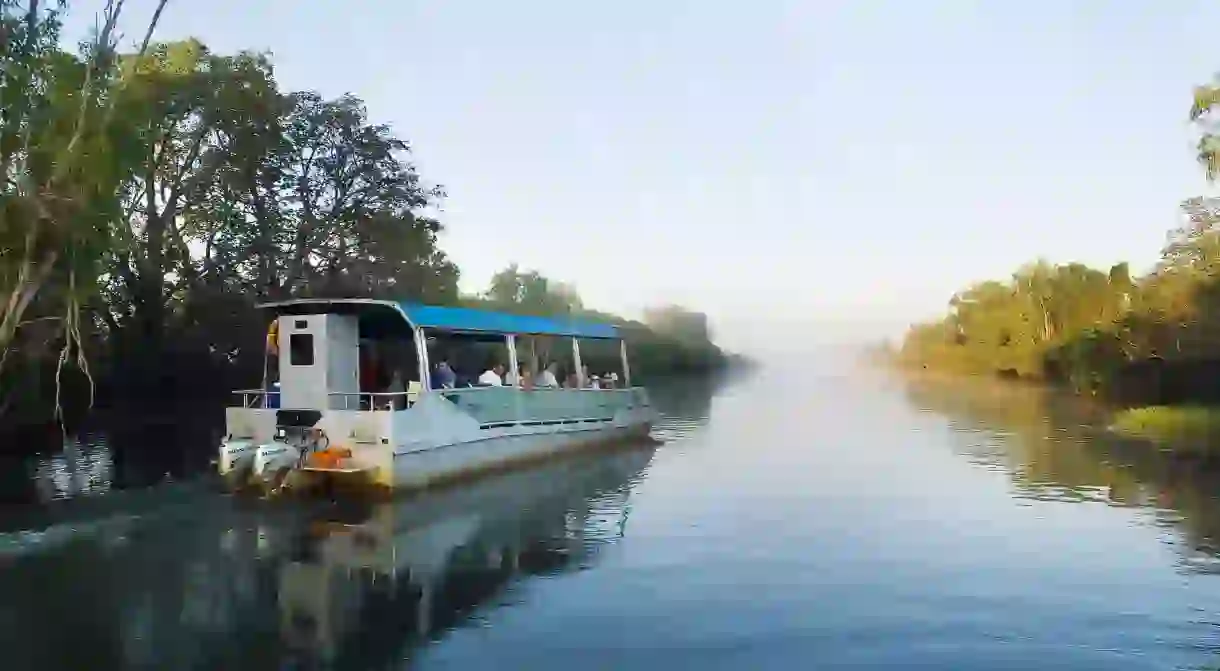11 Historic Indigenous Australian Sites and Landmarks

Indigenous people have inhabited the Australian continent for more than 60,000 years, and there are sacred sites and awe-inspiring landmarks found in every corner of the country. Check out 11 incredible Indigenous sites and landmarks you can visit around Australia.
Uluru
Natural Feature

Kata Tjuta
Natural Feature
About 30km from Uluru lies Central Australia’s other iconic rock formation: Kata Tjuta, a group of 36 enormous domes sprinkled across the ochre red landscape. The boulders — also known in English as the Olgas — are 500 million years old, and the Anangu people have inhabited the area for more than 22,000 years, with many secret spiritual legends surrounding the site.
Kakadu National Park
Park

Arnhem Land
Natural Feature
Wedged between Kakadu and the ocean, Arnhem Land is a natural paradise less than an hour and a half from Darwin. The Yolngu people have called the area home for at least 60,000 years — Arnhem Land is the birthplace of the didgeridoo, FYI — and the region abounds with untouched coastline, vibrant wildlife, plus some of the best fishing conditions you’ll find anywhere on earth.
The Kimberley
Natural Feature

The northernmost region of Western Australia is home to some of the oldest and most complex rock art in the world, with scientists dating some paintings in the north-west Kimberley at 16,000 years old. Broome — perched on the Indian Ocean, with famous sunsets over Cable Beach — is the biggest town in the area, serving as a launchpad for visitors to explore the miles of rugged terrain.
Grampians National Park
Natural Feature
The Grampians, three hours’ drive west of Melbourne, is another treasure trove of ancient rock art, containing 90 per cent of all the Aboriginal rock paintings in the entire state of Victoria. The Brambuk Cultural Centre in Halls Gap leads tours into the national park to discover the rock art sites, including the Manja and Billimina shelters in the Western Grampians and Ngamadjidj and Gulgurn Manja in the north.
Ku-ring-gai Chase National Park
Natural Feature

This sacred Indigenous site is located on Sydney’s northern doorstep, boasting more than 400 engraving sites to explore. Lace up your walking shoes and tackle the Ku-ring-gai Chase National Park on foot to marvel at the engravings of kangaroos, dolphins, turtles and fish, as well as the renowned hand stencils in Red Hands Cave.
Worimi Conservation Lands
Natural Feature
Sitting just across the harbour from Newcastle, Stockton Beach is home to the largest sand dunes in the Southern Hemisphere, as well as a series of 12,000-year-old shell middens that carry enormous cultural significance to the local Indigenous people. The traditional custodians — the Worimi people — now manage the 4200-hectare Worimi Conservation Lands, offering guided tours of the impressive dune landscape.
Wilpena Pound
Natural Feature
The five-hour drive from Adelaide to Wilpena Pound is well worth it when you lay your eyes on this vast 800-million-year-old natural amphitheatre. The local Adnyamathanha people call the Pound ‘meeting place’ in their language, and believe it was created by two Dreaming serpents who gobbled up so many humans they became too chubby to move, their prone bodies forming the windy mountain range.
Mossman Gorge
Natural Feature

The Eastern Kuku Yalanji people inhabited this pocket of North Queensland near Cairns for thousands of years before European colonisation, and that culture is still thriving today. Every visitor should go on a Ngadiku Dreamtime Walk through the lush rainforest, including a traditional smoking ceremony and exclusive access to a sacred site.
Wukalina Walk
Natural Feature
Tasmania’s gorgeous Bay of Fires region is worth a visit for the scenery alone, but the recently launched Wukalina Walk adds another layer to the experience. The Aboriginal owned and operated four-day tour of Tassie’s north-east coast immerses visitors in palawa (Tasmanian Indigenous culture), traditional bush tucker, and the pristine natural environment.













